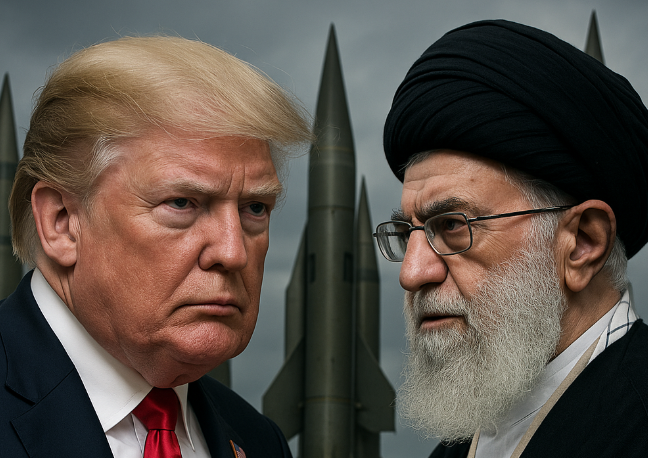America Launches Air Strikes on Iranian Nuclear Sites: The Iran-Israel war has reached a dangerous new phase as U.S. President Donald Trump announces successful air strikes on Iran’s nuclear facilities at Fordow, Natanz, and Isfahan. This bold move officially brings America into the conflict, raising fears of a wider war. With escalating tensions and uncertainty surrounding Iran’s response, the world watches as events unfold rapidly in the Middle East.
America Launches Air Strikes on Iranian Nuclear Sites
The ongoing conflict between Iran and Israel has taken a monumental turn as the United States, under President Donald Trump, has officially entered the war. In a dramatic announcement on his social media platform Truth Social, President Trump declared that the U.S. military has carried out successful air strikes on three key Iranian nuclear sites: Fordow, Natanz, and Isfahan. This unexpected military intervention has not only shocked global audiences but also significantly escalated tensions in the already volatile Middle East.
Just moments before the announcement, speculation was rife about a possible U.S. intervention. President Trump had previously posted a cryptic message saying, “Only time will tell,” which left many observers on edge. However, his latest post left no ambiguity. In his own words, Trump wrote, “We have completed our very successful attack on the three nuclear sites in Iran including Fordow, Natanz and Isfahan. All planes are now outside of Iran’s airspace.
A full payload of bombs was dropped on the primary site Fordow and all planes are safely on their way home. Congratulations to our great American warriors. There is not another military in the world that could have done this. Now is the time for peace.”
The timing of this strike is particularly significant as it comes on the ninth night of the conflict between Israel and Iran. Many experts believe that this bold military move was designed not only to support Israel but also to deliver a severe blow to Iran’s nuclear ambitions. The Natanz facility, in particular, has long been a focal point of concern for both Israeli and American intelligence due to its underground sections that have been difficult to target.
According to initial reports, U.S. air carriers had already been positioned in the region, signaling that military action was a distinct possibility. The U.S. President had even cut short his trip from New Jersey to return to Washington D.C., where he met with his national security team in the Oval Office. These developments indicated that something significant was unfolding behind closed doors.
There had also been widespread speculation about B-2 bombers that were seen taking off from Missouri and heading towards Guam, leading many to believe they might be involved in the operation. However, these appear to have been decoys as no direct confirmation has been given about their involvement in the actual strikes.
What is remarkable is the speed and precision with which the U.S. was able to carry out these attacks, possibly aided by Israel’s current control over significant portions of Iranian airspace, making the strike undetectable and effective.
The response from Iran is now highly anticipated. Tehran has consistently declared that any attack on its nuclear facilities constitutes a red line, warning that any nation supporting Israel’s Operation Rising Lion would become a legitimate target for retaliation.
Iran’s next move remains uncertain, but the potential for a broader regional war has dramatically increased. They may claim minimal damage to downplay the strike’s effectiveness or they may launch military retaliation against U.S. interests in the region, including American troops and military installations.
The American president’s statement, “Now is the time for peace,” raises many questions about Washington’s intentions moving forward. Is this declaration an attempt to halt further escalation, or is it merely a pause before potentially deeper involvement? As Susan Thrani noted on the situation, noted, this military action marks a historic and risky escalation, fraught with uncertainty. She emphasized that bombing nuclear facilities is always a dangerous option, carrying enormous consequences for regional and global stability.
President Trump is expected to address the nation shortly to clarify the administration’s position and outline the next steps. His speech is eagerly awaited as it may offer insight into whether the United States intends to deepen its involvement in the conflict or seeks a rapid de-escalation following this high-risk military maneuver. Meanwhile, all eyes are also on Israeli Prime Minister Benjamin Netanyahu, who had been urging the United States to take decisive action against Iran’s nuclear capabilities. His response to the U.S. strikes is expected soon.
As the situation evolves rapidly, the world watches with bated breath. The air strikes on Fordow, Natanz, and Isfahan have undeniably raised the stakes in the Iran-Israel war, with the United States now officially in the fray. What was once a regional conflict is now inching dangerously close to becoming a much larger international crisis. The coming hours and days will be crucial in determining whether this is the beginning of a broader war or a calculated show of force aimed at forcing a diplomatic resolution.
Disclaimer:
This article is based on developing news reports and official statements at the time of writing. The situation is rapidly evolving, and new information may emerge. Readers are advised to follow official sources and verified news outlets for the latest updates. The views expressed in this article are for informational purposes only and do not represent any political stance or endorsement.

